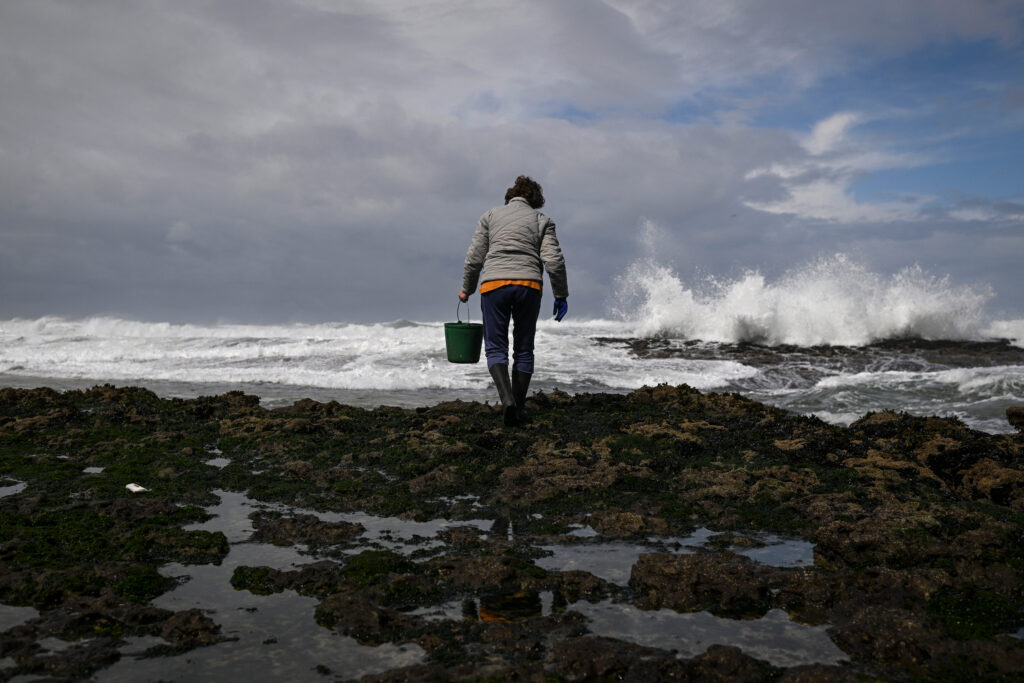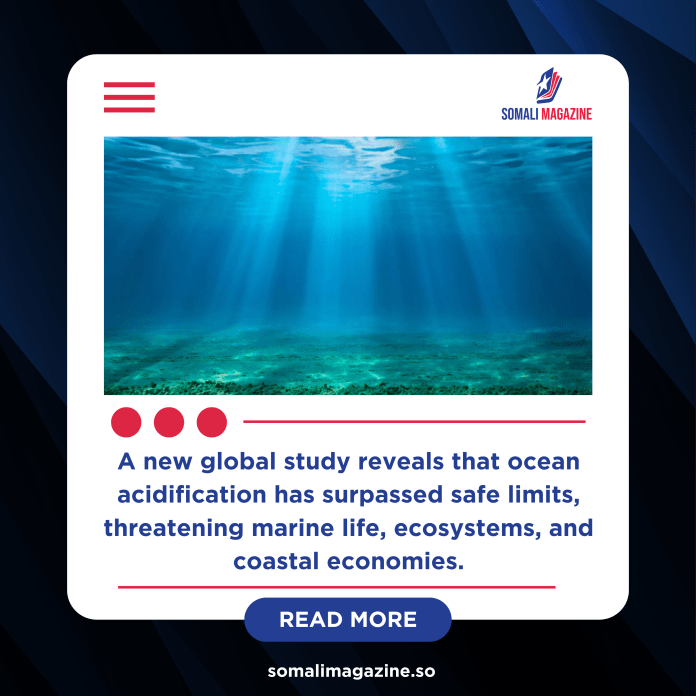Facebook Twitter (X) Instagram Somali Magazine - People's Magazine
A new study has found that the world’s oceans are in worse shape than previously believed. The research, published in the journal Global Change Biology, shows that ocean acidification—a process caused by oceans absorbing too much carbon dioxide from the air—has already passed a critical limit.
This change means that some parts of the ocean have reached a dangerous point where marine life is seriously affected.
Ocean acidification happens when oceans soak up excess carbon dioxide (CO₂) from the atmosphere. This makes seawater more acidic, which is harmful to marine animals like shellfish and coral that rely on calcium carbonate to build their shells and skeletons.
According to scientists, the situation crossed a major “planetary boundary” in 2020. This boundary is reached when calcium carbonate levels drop below 20% of what they were before the industrial era. The new study shows that levels are now down to 17%—a worrying sign that the oceans are no longer safe for many marine species.
“We’ve changed the entire ocean, not just one small part,” said Dr. Nina Bednaršek, one of the study’s authors and a researcher at Oregon State University. “It’s happening everywhere—from remote pristine waters to our own coastlines.”
The study was led by experts from Oregon State University, the UK’s Plymouth Marine Laboratory, and the U.S. National Oceanic and Atmospheric Administration (NOAA). The scientists used data from ocean measurements, computer models, and ice core records to understand how acid levels have changed over time.

They found that deeper parts of the ocean are even more affected than surface waters. At around 200 meters below the surface, about 60% of ocean water has crossed the danger zone. At the surface, around 40% has. This is especially concerning because many marine creatures live at these depths.
“Ocean life isn’t just found on the surface,” said Dr. Helen Findlay, the lead author and a biological oceanographer. “Many species live deeper down, and those waters are becoming more acidic faster than we expected.”
The rising acidity is already causing damage. In tropical and subtropical areas, coral reefs have lost over 40% of their habitats. In polar regions, tiny creatures called sea butterflies—which are a key food source for other animals—have lost more than 60%. Coastal shellfish like oysters and mussels have lost 13% of their habitable areas.
“Ocean acidification isn’t just an environmental issue—it threatens marine ecosystems and the people who depend on them,” said Dr. Steve Widdicombe, science director at the Plymouth lab. “Losing these habitats means big problems for marine life and coastal economies.”
The study also highlights that areas with the worst effects include polar regions and the West Coast of the United States—places that are among the most productive in the ocean.
Dr. Richard Feely, a NOAA oceanographer and study co-author, said earlier research showed we were nearing the danger point but hadn’t passed it yet. “Now we see that, especially in deeper waters and sensitive regions, we’ve already gone beyond it,” he said.
This research was released just as international ocean experts are meeting in France for the United Nations Ocean Conference. They are discussing serious threats to the oceans, including plastic waste and deep-sea mining.
Dr. Bednaršek expressed concern that even important findings like these may not lead to immediate policy changes. “It’s unfortunate,” she said. “But it’s still vital to track these changes and raise awareness. Hopefully, this will lead to stronger actions to protect our oceans.”
In short, this study shows that ocean acidification has already crossed into dangerous territory. The effects are global and serious, and they call for urgent action to protect marine life and the communities that depend on healthy oceans.

